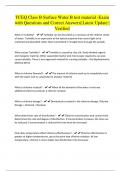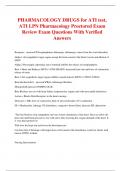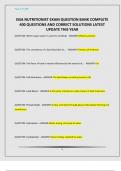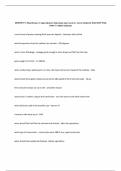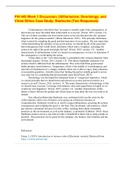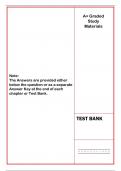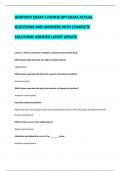Tentamen (uitwerkingen)
TCEQ Class B Surface Water B test material -Exam with Questions and Correct Answers| Latest Update | Verified
- Vak
- Instelling
hat the 4 stages of the Chlorine Demand Curve chart? - Stage 1: No residual is formed because inorganic demand destroys the chlorine. (Flat Line) Stage 2: Monochloramines are formed as chlorine combines with organics containing ammonia (rising curve). The chlorine to ammonia weight ratio at this...
[Meer zien]
